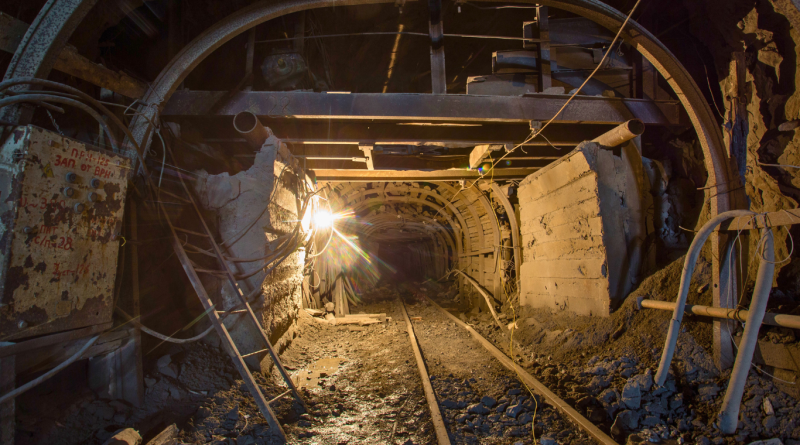The Pros and Cons of Subsurface Mining
Mining has been a cornerstone of human civilization for centuries, providing essential minerals and metals that fuel industries, economies, and modern technology. While surface mining is often the most visible method, subsurface mining plays a crucial role in extracting deep-seated mineral resources.
What Is Subsurface Mining?
Subsurface mining (also known as underground mining) is a method of extracting minerals from beneath the Earth’s surface. It involves digging tunnels, shafts, and chambers to access valuable deposits such as coal, gold, diamonds, and copper. This technique is often used when ore bodies are located too deep for surface mining methods like open-pit or strip mining.
In this article, we will break down the pros and cons of subsurface mining, helping you understand its role in today’s mining industry.
Pros of Subsurface Mining
1. Access to Deep-Seated and High-Value Resources
The most significant advantage of subsurface mining is that it enables the extraction of minerals located too deep for surface mining methods.
- Many of the world’s richest mineral deposits, including gold, silver, platinum, and diamonds, are buried deep underground.
- Coal mining operations often rely on subsurface mining when coal seams are covered by thick rock layers.
- Certain rare earth minerals, which are essential for electronics, batteries, and renewable energy technologies, can only be accessed through underground mining.
One company that benefits from this is Anglo American, a global mining firm that specializes in deep-level mining to extract valuable resources.
2. Reduced Surface Environmental Impact
Compared to surface mining, which involves large-scale excavation and land disruption, subsurface mining has a smaller footprint on the environment.
- Less deforestation: Underground mines do not require clearing vast tracts of land like open-pit mines.
- Minimal land erosion: Surface mining leads to severe soil erosion and sediment pollution in rivers, whereas underground mines cause less surface damage.
- Lower visual impact: Underground mines are hidden from view, unlike large surface mines that create massive craters in the landscape.
Rio Tinto, one of the largest mining companies in the world, has invested in underground mining projects to reduce land disruption while still accessing high-value minerals like copper and gold.
3. Higher Ore Quality and Reduced Waste
Subsurface mining is often more precise, allowing companies to extract high-grade ore with fewer impurities. This means:
- Higher-quality materials: Since underground mines directly target rich ore veins, they produce better-quality minerals with less unwanted rock and debris.
- Increased profitability: With higher ore concentration, mining companies generate greater revenue per ton of extracted material.
- Less environmental waste: Surface mining operations produce large amounts of rock waste, whereas subsurface mining extracts more pure ore with minimal excess material.
A good example is Vale, a Brazilian mining company that utilizes underground mining for nickel extraction, ensuring higher-grade materials with minimal waste.
Cons of Subsurface Mining
1. High Safety Risks and Worker Hazards
Despite its advantages, subsurface mining is considered one of the most dangerous occupations due to its hazardous working conditions.
- Cave-ins and tunnel collapses: Underground mines are at risk of structural failures, which can trap or kill workers.
- Toxic gas exposure: Dangerous gases like methane, carbon monoxide, and radon can accumulate in underground tunnels, leading to asphyxiation, poisoning, or explosions.
- Respiratory diseases: Long-term exposure to coal dust and other particles can cause serious lung diseases, such as black lung disease and silicosis.
According to the International Labour Organization (ILO), underground mining has one of the highest workplace fatality rates, with thousands of reported injuries each year.
2. Environmental Risks: Groundwater Contamination & Land Subsidence
While subsurface mining reduces surface damage, it can still cause serious environmental issues underground, including:
- Groundwater pollution: Toxic chemicals from mining operations can seep into water sources, contaminating drinking water supplies.
- Land subsidence: Underground tunnels can lead to sinkholes and ground collapses, affecting local communities and infrastructure.
- Acid mine drainage: Chemical reactions between minerals and water can create acidic runoff, polluting rivers and lakes.
Abandoned underground mines continue to leak pollutants into groundwater for decades, causing long-term environmental damage.
3. Expensive Infrastructure and Operational Costs
Subsurface mining requires specialized equipment, advanced technology, and a skilled workforce, making it far more expensive than surface mining.
- High initial investment: Building tunnels, ventilation systems, and underground transport networks requires significant capital investment.
- Complex maintenance: Underground mines require continuous monitoring to prevent collapses, gas leaks, and ventilation failures.
- Higher energy costs: Pumping out groundwater, running ventilation systems, and operating underground machinery consumes far more energy than surface mining.
Underground mining operations cost a lot more than surface mining due to the complexity of the infrastructure and safety requirements.
Subsurface mining plays a crucial role in supplying deep-seated minerals that surface mining cannot reach. As the demand for minerals grows, mining companies and governments must find ways to improve underground mining safety, reduce environmental impact, and develop cost-effective solutions. Emerging technologies such as automated mining equipment and improved ventilation systems could help minimize risks and enhance efficiency in the future.
Ultimately, the challenge is to strike a balance between the economic benefits of subsurface mining and its environmental and human costs.
